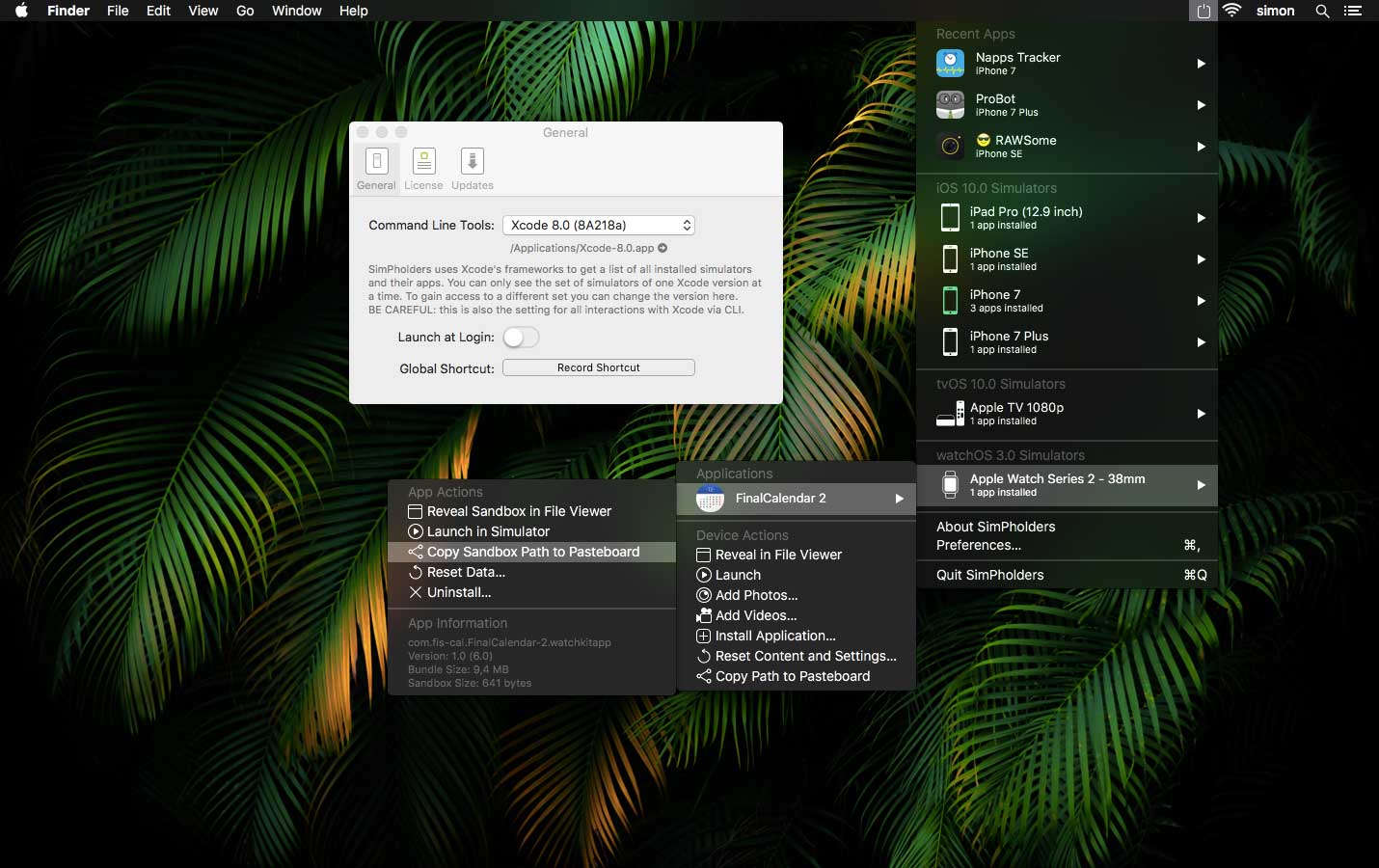

The function returns an instance of NSArray containing one result, the path to the application's Documents directory. We use the NSSearchPathForDirectoriesInDomains() function and pass the NSDocumentDirectory constant as the first argument to indicate that we're only interested in the application's Documents directory. The second and third argument are of less importance for this discussion. NSString *documents = [directories > documents) NSArray *directories = NSSearchPathForDirectoriesInDomains(NSDocumentDirectory, NSUserDomainMask, YES)
SIMPHOLDERS XCODE8 CODE
Retrieving the path to the application's Documents directory requires a bit more work as you can see in the code snippet below. The application sandbox and the limitations imposed are identical though. However, if you run the application on a physical device, the output looks a bit different as you can see below. If you run the application in the iOS Simulator, the output in the console will look something like the output shown below. Open TSPAppDelegate.m and add the above code snippet to application:didFinishLaunchingWithOptions. Create a new Xcode project based on the Single View Application template and name it Data Persistence. The application's sandbox directory, often referred to as its home directory, can be accessed by calling a simple Foundation function, NSHomeDirectory(). The operating system installs each iOS application in a sandbox directory, which contains the application bundle directory and three additional directories, Documents, Library, and tmp. The reasons for these differences are mainly historical. The application sandbox of an iOS application, for example, contains the application bundle, which is not true for OS X applications. Even though the constraints put on OS X applications are not as stringent as the ones imposed on iOS applications, the general concept is similar but not identical.
SIMPHOLDERS XCODE8 MAC
With the introduction of the Mac App Store, Apple has begun to enforce application sandboxing on OS X as well. The application sandbox also includes controlled and limited access to user data stored on the device, system services, and hardware. In contrast to what most people think, an application's sandbox does not only refer to an application's sandbox directory in the file system. In contrast to OS X applications, an iOS application is placed in an application sandbox. Security on the iOS platform has been one of Apple's top priorities ever since the iPhone was introduced in 2007. Did you really think you could store your application's data wherever you'd like on the file system? Think again, padawan.

The data your iOS application stores can be anything from user preferences to temporary caches or even large relational datasets.īefore discussing the most common data persistence strategies developers have on the iOS platform, I'm first going to spend a few minutes discussing the file system and the concept of application sandboxing. Virtually every iOS application stores data for later use.

However, there's one vital aspect of iOS development that we haven't discussed yet, data persistence. You've come a long way, grasshopper, and you've learned a lot.

I will also talk about the file system on iOS and how application sandboxing affects data persistence. In this article, we'll explore the most common strategies used for storing data in an iOS application. Persisting data across application launches is a requirement that most iOS applications have, from storing user preferences using the user defaults system to managing large datasets in a relational database.


 0 kommentar(er)
0 kommentar(er)
